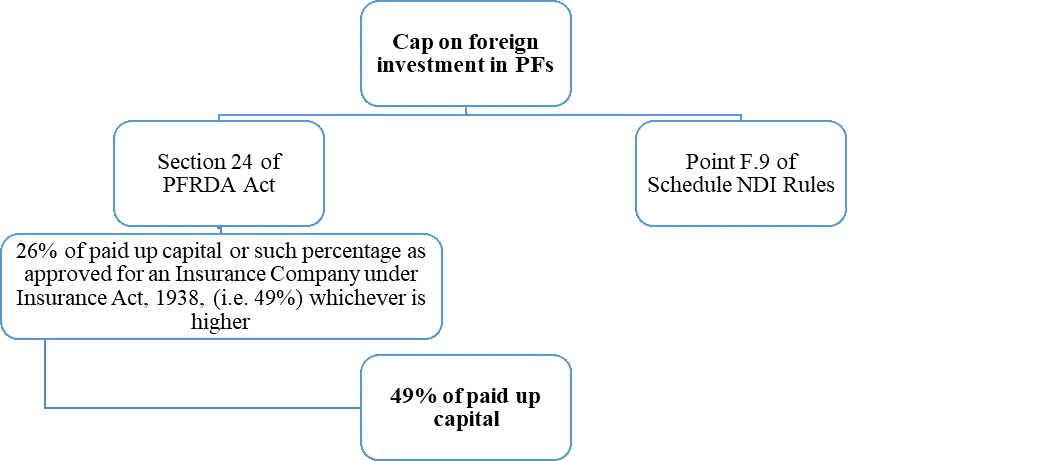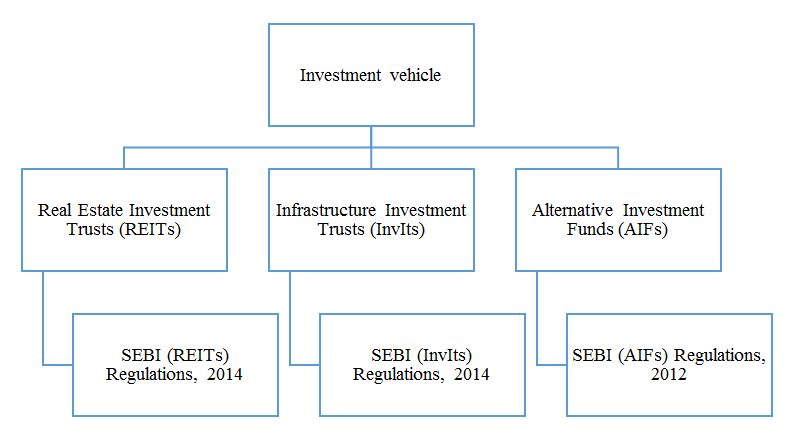Henil Shah | Executive
corplaw@vinodkothari.com
Introduction & Background
In layman’s term, a company with falling share prices, inability to pay off its obligations is said to be a company with financial distress. In most of the times, it is seen that the conventional means of fund raising such as borrowings, issuance of debt securities etc. do not work for such companies due to their ongoing stressed status even though generating cash is the foremost priority for them to fund their operations. Additionally, insolvency/ bankruptcy also becomes a matter of concern which may be caused due to the lack of funding and the resultant disruption in operation.
SEBI’s Primary Market Advisory Committee (PMAC) deliberated on the topic and came out with a Consultation Paper dated April 22, 2020[1] providing for the proposed measures for resuscitation of the stressed companies. The changes so proposed were w.r.t certain amendments under the SEBI (Issue of Capital and Disclosure Requirements) Regulations, 2018 (ICDR Regulations) and SEBI (Substantial Acquisitions of Shares and Takeovers) Regulations, 2011 (SAST Regulations). Based on the public comments, SEBI vide Notifications dated June 23, 2020 has prescribed the final text of the amendments under the ICDR Regulations[2] and SAST Regulations[3]
The article covers a brief synopsis and the relevant impact/ actionable pursuant to the said amendments.
Rationale behind the proposed changes
Preferential issue seems to be one of the most sought options of fund raising by the companies due to the administrative as well as regulatory convenience it carries. Further, knowing the probable investors ready to invest in the company makes a preferential issue one of the most commonly used ways for raising funds.
For a listed company, under a preferential issue, the issue price has to be determined as per the pricing provisions of Chapter V of ICDR Regulations. The ICDR Regulations provides the pricing mechanism for both frequently traded shares and infrequently traded shares.
In case of frequently trades shares, the price shall be determined as per the provisions of Regulation 164(1) (a) & (b) of the ICDR Regulations which are as follows.

Even though a preferential issue may be a convenient way of fund raising for a well performed company, the same may not be the case for a company with financial distress for the following reasons:
1. Onerous pricing mechanism
Considering the continuous falling prices of the shares over a period of 26 weeks due to the company being in stress, the determination of the price as per the pricing mechanism provided in Regulation 164(1) (a) becomes too onerous for the investor. Further, the price under Regulation 164(1) (a) is much higher than that as determined as per Regulation 164(1) (b). Hence, the pricing mechanism acts as a major deterrent for the investors from subscribing to the shares offered under the preferential issue.
2. Exemptions only to 5 QIBs restricting investor pool
Though the ICDR Regulations allow issuance to QIBs at a price determined as per regulation 164(1) (b) however, the same is restricted to only 5 QIBs and is not applicable to the investors other than QIBs thereby restricting the investor pool.
3. Open offer obligations for the acquirer
Another roadblock which the issuers tend to face is from the view point of the investors i.e. an incoming investor who has an impending burden on complying with an open offer obligation in case where the subscription to the preferential offer leads to the triggering of the open offer obligations under SAST Regulations. In view of the procedural requirements and the huge costs involved, making an open offer discourages the investors seeking to have a substantial stake in the company in order to take control and thereby reverse the stress.
As per the extant provisions, the acquisition pursuant to a resolution plan approved under the Insolvency and Bankruptcy Code, 2016 is exempted from meeting the open offer obligations but no such exemption has been provided in case for acquisition in the financially distressed entity which are not under any resolution plan.
Rescue mechanism brought through the amendments
Insertion of regulation 164A in ICDR Regulations
The newly inserted provisions incorporate the changes that were proposed by PMAC into the existing regulations as discussed below:
When to consider a company at ‘stress’?
For a company to be classified as financially stressed and issue equity share in pursuance of regulation 164A of ICDR regulations it has meet certain conditions. Below is a comparative presentation between the text of the Consultation Paper and the final text of the Regulations. Further, any two of the three conditions shall have to be satisfied for considering a company as stressed.
| PMCA Recommendations |
Final text of the Regulations |
Remarks |
| A listed company which has made disclosure of defaults on payment of interest/ principal amount of loans from banks/ financial institutions and listed and unlisted debt securities for 2 consequent quarters in terms of the SEBI Circular dated November 21, 2019[4] issued in this regard.
|
The issuer has disclosed the default relating to the payment of interest/ repayment of principal amount on loans from banks/ financial institutions/ NBFCs- ND-SI and NBFCs-D and/ or listed on unlisted debt securities in terms of SEBI circular dated November 21, 2019 and such default is continuing for a period of at least 90 days after occurrence of such default.
|
The amendment regulation in slight contrast to the PMAC recommendations provided shorter timeline for calculating continuity of the default.
Further, even though NBFCs-ND-SI and NBFCs- D already get covered under the definition of Financial Institution provided under RBI Act, they have been specifically covered under the list of creditors. |
| Existence of Inter-Creditor agreement in terms of Reserve Bank of India (Prudential Framework for Resolution of Stressed Assets) Directions 2019[5] (RBI Directions)
|
Same as PMCA Recommendations |
Inter-Credit agreement as provided in the RBI Directions stands for the agreement executed among all the lenders of a defaulting borrower, providing for ground rules for finalisation and implementation of resolution plan in respect to the borrower. |
| Credit rating of the listed instruments of the company has been downgraded to “D”. |
The credit rating of the financial instruments (listed or unlisted), credit instruments/ borrowings (listed or unlisted) of the listed company has been downgraded to “D” |
The final text of the amendments, in addition to the listed instruments, also brings unlisted instruments and as well as borrowings under its purview. |
Pricing of preferential issue of shares of companies having stressed assets
Unlike the current pricing requirements as provided in Regulations 164(1) (a) & (b) of ICDR Regulations for a preferential issue, the price of the shares to be issued by a stressed company as aforesaid shall be a price which shall not be less than the average of the weekly high and low of the volume weighted average prices of the related equity shares quoted on a recognised stock exchange during the two weeks preceding the relevant date. Therefore, the price as determined under Regulations 164(1) (a) & (b) of ICDR Regulations shall not be considered.
Negative list of proposed investors
The following person(s) shall not be eligible to participate in the preferential issue under Regulation 164:
- Persons/entities part of promoter or promoter group will not be eligible to participate in the preferential issue;
- Undischarged insolvent in terms of Insolvency and bankruptcy Code, 2016 (IBC, 2016);
- Wilful defaulter as per RBI guidelines issued under the Banking Regulations Act, 1949;
- A person disqualified to act as director as per Companies Act, 2013
- Person debarred from trading in securities or accessing securities market by SEBI and period of debarment has not been over
- Person declared as fugitive economic offender
- Person is convicted of offence punishable with imprisonment
- For a period of 2 years or more under any as specified under 12th schedule of IBC, 2016
- 7 years or more under any law for time being in force
and a period of 2 years has not been subsisted from his release form imprisonment.
- Person who has executed a guarantee in favour of a lender of the issuer and such guarantee has been invoked by the lender and remains unpaid in full or part.
Approval from shareholders falling under ‘public’ category
For companies with identifiable promoters
The amendments provides for an approval for the preferential issue by the majority of the shareholders in the ‘public’ category. The ‘public’ category of shareholders does not include promoter shareholders and also any proposed allottee who is already a holder of specified securities of the issuer. Therefore, the same is said to be an approval with majority of the minority.
For companies with identifiable promoters
For companies with no identifiable promoters, the resolution shall have to be passed by 3/4th majority. Though in this case, there is no specific mention in the Regulation as regards the eligibility of voting by the proposed allottees being a security holder in the issuer, the same should apply here also.
Contents of explanatory statement annexed with the notice of shareholder’s meeting
The proposed use of the issue proceeds shall be mentioned in the explanatory statement sent for the purpose of the shareholders resolution. This requirement is already in existence as the provisions of regulation 163 of ICDR Regulations and Rule 13 of the Companies (Share Capital and Debenture) Rules, 2014 do provide for mandatorily mentioning object for which the preferential issue is being made in the explanatory statement of the notice.
Restriction on use of proceeds
Additionally it’s restricted to use the issue proceeds for the purpose of repayment of loans from promoters/ promoter group/ group companies effectively deterring the companies to raise funds to pay-off its promoters.
Appointment of public financial institution or schedule commercial bank as monitoring agency:
As per the amendments, it shall be mandatory for the issuer company to appoint a monitoring agency whoc shall be responsible to submit report on quarterly basis to the issuer until 95% of the proceeds are utilised in the format as specified in Schedule XI ICDR Regulations. All though there is no requirement of appointing a monitoring agency as per the provisions of chapter V (Preferential Issue) requirement of ICDR Regulations, the concept of the monitoring agency is not new as several chapters of the regulations provide for appointment and functions to be performed by the monitoring agency in case where offer size exceeds a predefined limit. However the considering issue by a financially stressed company there is no monetary limit set for the purpose of appointment of monitoring agency.
Responsibilities of Board of Directors
The board of directors and the management of the issuer shall be required to provide their comments on the findings in the report of monitoring agency and disseminate the same within 45 days of end quarter by publishing it on the website of the company as well as submitting the same with the stock exchange(s) were equity shares of the company are listed.
Responsibilities of Audit Committee
Additionally the audit committee of the issuer is entrusted with responsibility to monitor the utilization of the proceeds. This is nothing new the same already falls under the responsibility of the audit committee as laid in the SEBI (Listing Obligations and Disclosure Requirements), 2015.
Further, the audit committee of the company shall also be required to certify about the meeting of all conditions at the time of dispatch of notice and at the time of allotment.
Responsibilities of statutory auditors
The amendments require the statutory auditor also to certify about the meeting of all conditions at the time of dispatch of notice and at the time of allotment.
Lock in period
The allotment shall be lock-in for a period of 3 years from the date of trading approval.
Amendments to SAST Regulations
On same lines as mentioned in the Consultations Paper, SEBI has vide its amendments under the SAST Regulations inserted regulation 10 (2B) of SAST Regulations thereby granting immunity from open offer obligations to the investors under the preferential issue in compliance with regulation 164A of ICDR Regulations. Irrespective of the fact that equity shares are frequently traded or not.
Conclusion
Considering the stressed status of the company, it is believed that aligning the pricing requirement with that of pricing requirement in case of preferential issue to QIBs, shall effectively increase the pool of investors. Similarly, the proposed exemption from making of an open offer shall lessen the additional burden on an incoming investor to comply with the stringent requirements thereby attracting investors to put in money in such companies.
Accordingly, SEBI’s intention behind the changes may be said to be a welcome move as it will definitely help the financially stressed companies to revive.
Link to our other articles:
SEBI’s proposal to aid financially “stressed” companies: http://vinodkothari.com/2020/04/sebis-proposal-to-aid-financially-stressed-companies/
Prudential Framework for Resolution of Stress Assets: New Dispensation for dealing with NPAs: http://vinodkothari.com/2019/06/fresa/
[1] https://www.sebi.gov.in/reports-and-statistics/reports/apr-2020/consultation-paper-preferential-issue-in-companies-having-stressed-assets_46542.html
[2] http://egazette.nic.in/WriteReadData/2020/220093.pdf
[3] http://egazette.nic.in/WriteReadData/2020/220094.pdf
[4] https://www.sebi.gov.in/legal/circulars/nov-2019/disclosures-by-listed-entities-of-defaults-on-payment-of-interest-repayment-of-principal-amount-on-loans-from-banks-financial-institutions-and-unlisted-debt-securities_45036.html
[5] https://www.rbi.org.in/Scripts/NotificationUser.aspx?Id=11580&Mode=0




